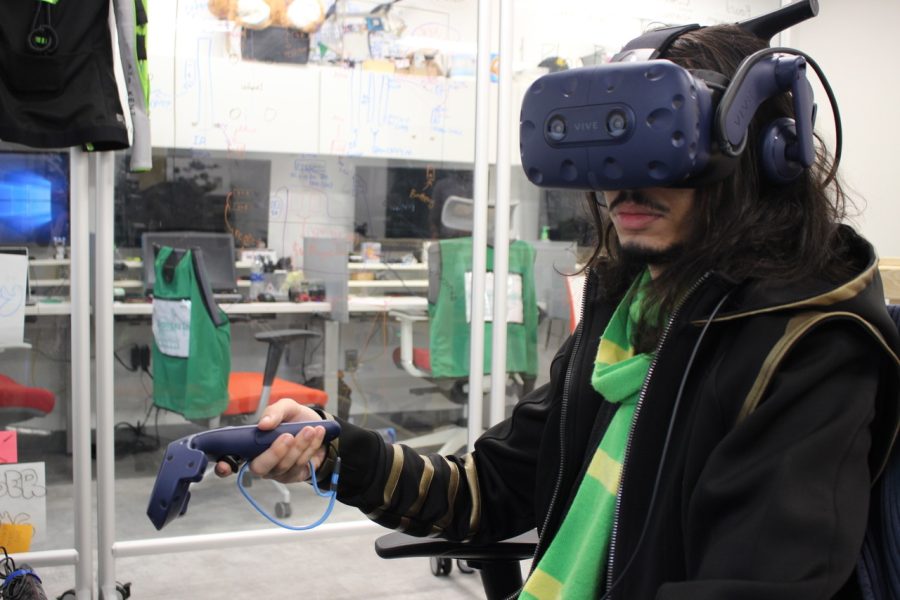Research team uses virtual reality technology to help people with disabilities
April 5, 2019
Leaving the house can be exciting for some people, but not for everyone. For people who have intellectual and developmental disorders, processing new things can be very hard and can create what Mary Ann Devine calls a “barrier” with the outside world.
Devine is a professor in the Recreation, Park and Tourism Management program and the lead researcher of a project that is testing ways to use virtual reality technology to help people with disabilities understand new environments.
“The idea started from me and wanting to look at … barriers people with intellectual disabilities experience related to being more physically active,” Devine said. “And through some reading and a variety of discussions with people, it was suggested that maybe the barriers that these folks experience could be looked at using technology.”
Based on suggestions from peers, Devine reached out to Gokarna Sharma and Jong-Hoon Kim, both of whom are assistant professors in computer science, to get their expertise on the technology side of the project.
Sharma and Kim brought graduate students Alfred Shaker, Hyunjae Jeong and Xiangxu Lin to join as well.
The team received a $15,000 grant from the Kent State Healthy Communities Research Initiative group to help launch the project and is hoping to gain more funding from places like the National Science Foundation, along with other corporations and businesses, Devine said.
After receiving the initial launch money, team members used pictures of the Recreation and Wellness Center taken by Shaker and Lin to create a program for people with disabilities to test.
“I reached out into the [Kent] community. There’s also an on-campus group of students … [and] I reached out to some of the students I knew in that group,” Devine said. “They actually served as research experts for us because they were able to tell us what worked for them.”
To collect this information from participants, surveys were given before and after each participant used the virtual reality program, Shaker said.
“In our first pilot round of this study, [the participants] were very useful in validating what was done, that it was usable, that it was accessible,” Devine said. “That validation was really important for us to progress [and] advance this project.”
The team has also sent papers about their project to research conferences to increase feedback on the project and possibly offer more opportunities for funding.
Moving forward, the team is making edits to the program based off the feedback and hopes to do a second round of testing in June.
“Ultimately what we hope to do is take what we learn and communicate it to a broader audience, such as public entities like public parks and help the public entities … better understand what they could do to improve opportunities for people with intellectual disabilities to be more physically active,” Devine said.
Rachel Karas covers graduate education and research. Contact her at [email protected].

























